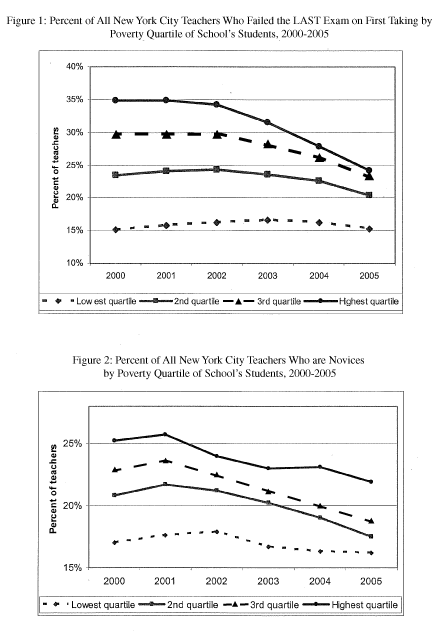Another new study includes some results that ought to give those of us who spend a lot of time maligning NCLB's teacher quality provisions new food for thought. While not an overt evaluation of NCLB, this study shows that teacher qualifications a la NCLB do have an effect on student achievement.
The Narrowing Gap in New York City Teacher Qualifications and Its Implications for Student Achievement in High-Poverty Schools, finds a very significant shift in the distribution of qualified teachers in that city between 2000 and 2005. The quality of teachers (as defined by performance on licensure exams, certification status and area, competitiveness of undergraduate institution, pathway into teaching, SAT score and experience) who were employed in schools with large percentages of poor and minority students improved significantly in those years.
For example, the tables below show the narrowing gap between low and high poverty schools for teachers who failed the state's Liberal Arts and Sciences licensure test (Figure 1) and in the distribution of novice teachers (Figure 2). New York's achievements appear to stem from its virtual elimination of newly hired, uncertified teachers. Instead NYC is now hiring a large number of alternate route teachers with strong academic backgrounds, primarily from the Teaching Fellows program (run by The New Teacher Project), and Teach For America.

Most importantly, the study finds that these improvements in teacher qualifications, especially among the poorest schools, do lead to improved levels of student achievement.
